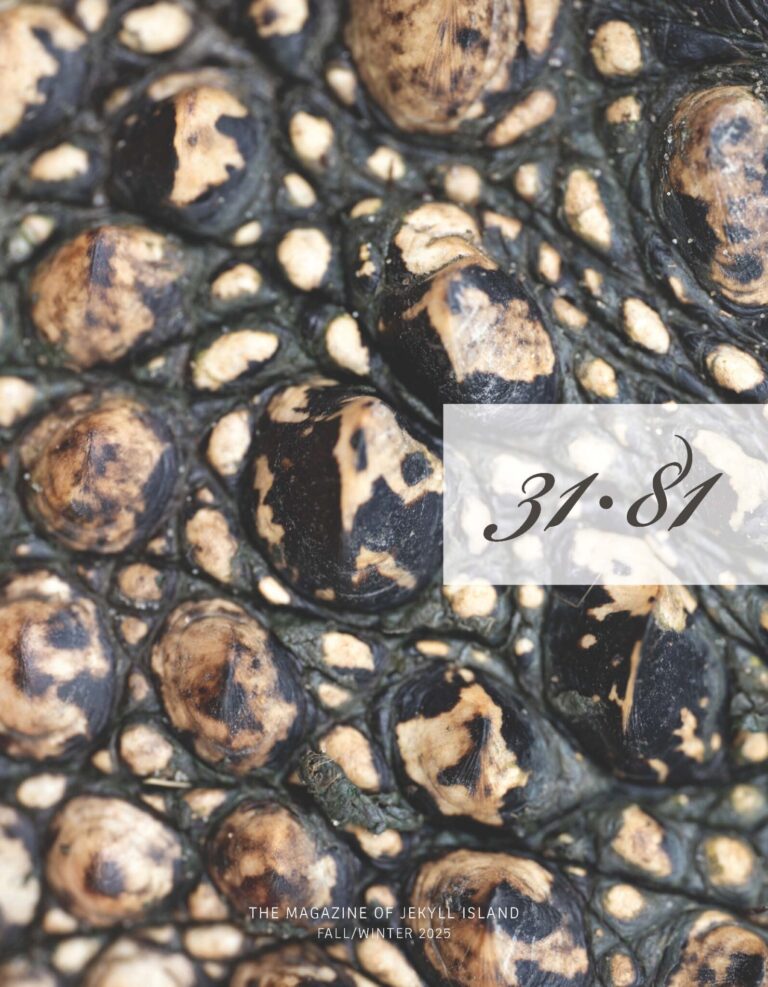Glow-in-the-dark jack o’lantern mushrooms are appealing, but poisonous
By Tess Malone
Some of Jekyll Island’s fungi glows gold in late summer and fall. Aptly named the jack o’lantern mushroom, thanks to their orange coloring and the season when they emerge, large colonies reside in rotting hardwood trees and among palmettos across the island. These colonies are known for their occasional ability to glow in the dark; this bioluminescence comes from phosphorus that the mushrooms absorb and that attracts nocturnal insects to land and spread spores. Folklore has spread over the years about how they illuminate the way for travelers or even contain trapped souls. The pumpkin-colored stacks are toxic to humans and animals despite looking similar to tasty chanterelles. Look for the jack o’lantern’s distinctive gills to differentiate it from its gourmet twin. For now, we can admire their radiance and spooky glow from afar.


